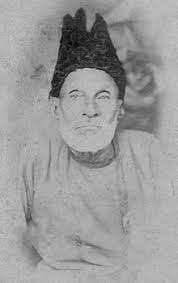Some historical buildings associated with RabindranathTagore
Kalimpong- The Chitrabhanu is situated at the Chhibo Slum under Kalimpong sub-division of Kalimpong district. The area was dear to Rabindranath Tagore but the house was not constructed during his lifetime. After one year from the death of Rabindranath Tagore, his son Rathindranath Tagore took the land on lease for 90 years. The leasing was made on 12 March 1942 in the name of his wife, Pratima Devi. The construction of the house was completed in the year 1943. It was named as Chitrabhanu after the name of the studio of Rathindranath Thakur at Shantiniketan. In 1964, the West Bengal Board of Secondary Education acquired the property and established a Crafts Training Centre for Women here. Later, a Centre for Technical Education was established here under a joint initiative of Individual and Government of West Bengal. It was damaged by an earthquake In 2018, the West Bengal Heritage Commission declared Chitrabhanu as a heritage.
Reference: https://wbhc.in/home/place_details/
Date of visit: 2017
Shillong- Jitbhumi in Rilbong is more than a century old and was lived by Rabindranath Tagore in April 1923. The house was built by the British during the last part of 19th century when the Kench’s Trace area was a hilly grove. In 1905-1910, when the partition of Bengal was declared including East Bengal with Assam to form a new province named Assam Bengal, and the capital was shifted from Shillong to Dacca, all the top officials were transferred to Dacca. During that period, the houses were disposed of at a cheap rate and ‘Jitbhumi’ was purchased by Dr Devendranath Chatterjee, a government physician in Shillong. Devendranath married Abhigna Devi, daughter of Hemendranath, the third elder brother of Tagore. The story goes that the house while purchased by Devendranath, was under litigation, and Devendranath had to move the case that he ultimately won. Tagore named the house ‘Jitbhumi’, or conquered land. As Abhigna Devi died a premature death, Devendranath married Manisha Devi, the younger sister of Abhigna, who was a very good singer and set up an art and music school in the Jitbhumi complex in 1915. Eminent writer Leela Mazumdar and her elder sister came to learn here. After her husband’s death in 1916 Manisha Devi stayed in the house till 1927. At the entrance of the house, there still stands a plaque carrying the memory of the great poet Tagore’s stay here. It is engraved as, ‘Here lived RABINDRANATH TAGORE in April–May–June 1923. His famous drama ‘RAKTAKARABI’ and poems ‘Shillong-er-Chithi’ etc were written here.’ On the other side of the plaque, a few lines of a poem in Bengali, composed by Tagore are engraved. For the last few decades, the owner of ‘Jitbhumi’ was Bimal Chakravorty who preserved the house. Recently, it was heard that ‘Jitbhumi’ was disposed of and the new owner also pledges to preserve the memories of the bard.
Reference: https://theshillongtimes.com/2019/02/24/where-history-resides/
Date of visit: 2019
Shantiniketan- The houses and lived by Tagore are of immense historical and cultural significance:
Konark: It is the second house of Uttarayana.
 |
| Konark (picture from internet) |
 |
| Shyamoli (picture from internet) |
 |
| Punashcho (picture from internet) |
 |
| Uttarayan (picture from internet) |
 |
| Udichi (picture from internet) |
 |
 |
| Closer glimpse |
References:
https://touristdestinationoffbeat.wordpress.com/2020/06/22/kalo-bari-an-unknown-shantiniketan-by-tourist-destination/
https://www.t2india.com/upasana-griha-shantiniketan-attractions.aspx
https://www.bolpur-santiniketan.com/travel-guide/heritage-houses-santiniketan-campus/
Date of visit: 2009















Comments
Post a Comment